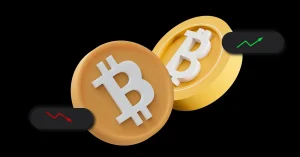Bitcoin Halving Is Less Than 40,000 Blocks Away—Here’s What That Means
1 year ago CryptoExpert
The Bitcoin network passed block 800,000 on Monday, marking another major milestone in the history of the world’s largest cryptocurrency.
This also means that the next Bitcoin halving event—they occur every four years, reducing miners’ rewards by half, and is set to occur at block 840,000—is now less than nine months away (or 40,000 blocks), according to Bitcoinblockhalf.com.
“As we celebrate the mining of the 800,000th block, we find ourselves in a fascinating period of Bitcoin’s life cycle. This is indeed a key milestone on the path to the next halving, and it certainly adds a layer of excitement to the already vibrant ecosystem,” Matt Prusak, Chief Commercial Officer at Miami-based Bitcoin mining company US Bitcoin Corp told Decrypt.
The 800,000th block was mined at a time when Bitcoin hash rate—the total computational power used to mine and process transactions on the network—is close to historical highs. Meanwhile, Bitcoin mining difficulty—another key metric measuring how challenging it is to find a new block—hit a new all-time high at the most recent adjustment about two weeks ago.
According to Prusak, these two metrics “represent an ever-evolving dance between technology and economy,” and as the halving is approaching, the current trajectory suggests they will continue their upward trend.
“This is mainly a reflection of the increased competition among miners, as well as advancements in mining technology that contribute to the overall efficiency and security of the network,” he said.
Phil Harvey, CEO of digital asset management consultant and data center operation provider Sabre56, shares similar views, saying we can witness similarities to the previous halving event in 2020—”with only the fittest set to survive.”
“Pre-halving, increased hash power is supporting the network’s sustained growth and robustness. This will only rise into the halving, reaching all-time highs as miners push to get miners online,” Harvey told Decrypt.
Focus on Bitcoin ETFs
The latest milestone also came amid the increased attention to Bitcoin ETFs, with many in the industry hoping that after years of rejections the U.S. Securities and Exchange will finally approve the investment tool claimed to be highly sought after by American investors.
“When it comes to the effect of micro and macro events, such as Bitcoin ETFs and broader regulatory developments, it is crucial to acknowledge the complex interaction between these aspects and market dynamics,” said Prusak.
According to him, the possible approval of a Bitcoin ETF could indeed be “a significant catalyst for the cryptocurrency space,” resulting in a more streamlined avenue for institutional and retail investors alike to gain exposure to Bitcoin, and hence potentially driving up demand and price.
“However, it is important to stress that, while these factors may have an impact, the inherent properties of Bitcoin—its scarcity, decentralization, and immutability—have always been its primary value propositions,” added Prusak. “This is perhaps even more apparent as we move closer to the halving event, reminding us once again of the deflationary nature of this asset.”
What’s in the cards for Bitcoin
Despite the high expectations among investors, the price of Bitcoin plunged below $30,000 on Monday, which, according to Harvey, also bears consequences for miners—the sector’s key players.
“The market’s downturn means facility expansions are below expectations, due to capital restraints and precautionary behavior—impacting deployment. Many industry players have offline equipment in warehouses, and are now scrambling to secure partners or facilities to house them,” the Sabre56 CEO told Decrypt.
He also reminded that miners’ profits in recent months have been supported by both price increase and a sustained transaction fee increase. However, with difficulty and hash power increasing, miners are now between a 30-50% margin at operations run at hosting costs of $0.07 – $0.05 per kWh.
“As before, positive revenues from this will be curbed post-halving, until BTC increases in value, and hash power and difficulty starts to reduce,” said Harvey.
US Bitcoin Corp’s Prusak also pointed out that while no one can predict with absolute certainty what’s going to happen in terms of expectations for the months leading up to the halving, historically halving events have been periods of increased attention and speculation.
“This, combined with the current macro events, might lead to heightened market volatility,” Prusak said. “As always, participants should proceed with caution, mindful of the risks associated with such periods of uncertainty.”
Still, he stressed, while the industry is “indeed sailing in uncharted waters, the core tenets of Bitcoin remain robust.”
“It continues to be a compelling combination of technology, economics, and social dynamics. We are at the precipice of what could be another transformative period in the life of Bitcoin, one we eagerly look forward to navigating,” Prusak said.















